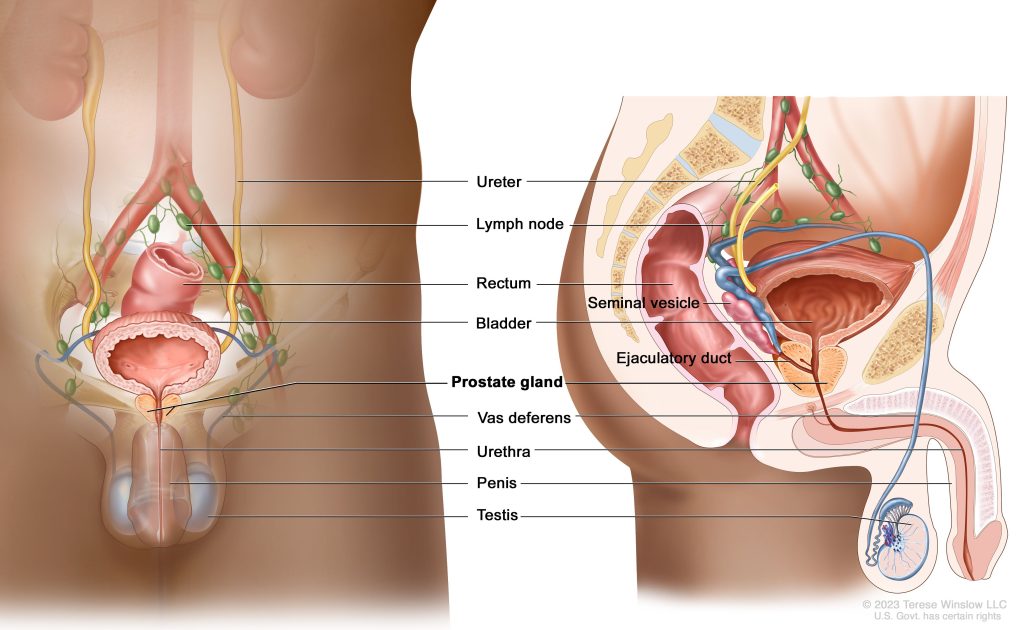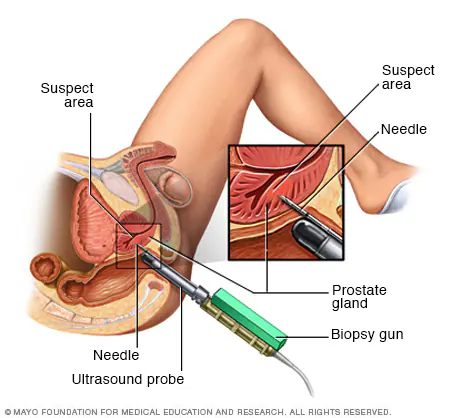Explore the intricate details of prostate cancer, circulating tumor DNA, neoplasm, metastasis, oncology, and castration in this comprehensive guide. Understand the causes, symptoms, treatments, and future research directions.
Introduction
Prostate cancer, a prevalent health concern among men, particularly in older age, demands significant attention due to its impact on quality of life and mortality rates. This comprehensive guide aims to unravel the complexities of prostate cancer and related terms such as circulating tumor DNA, neoplasm, metastasis, oncology, and castration. By exploring these interconnected aspects, we hope to provide a deeper understanding of the disease, its progression, and the current treatment landscape.
Understanding Prostate Cancer
Anatomy of the Prostate
The prostate is a small, walnut-sized gland located below the bladder and in front of the rectum. It plays a crucial role in male reproductive health by producing seminal fluid, which nourishes and transports sperm.
What is Prostate Cancer?
Prostate cancer occurs when cells in the prostate gland begin to grow uncontrollably. While many prostate cancers grow slowly and may not cause serious harm, others are more aggressive and can spread quickly.

Risk Factors
Several risk factors contribute to the development of prostate cancer, including age, family history, race, and lifestyle choices. Men over 50, African American men, and those with a family history of prostate cancer are at higher risk.
Causes and Symptoms
Genetic Factors
Inherited genetic mutations can increase the risk of prostate cancer. Research has identified several genes, such as BRCA1 and BRCA2, that are linked to an increased likelihood of developing the disease.
Environmental Factors
Diet, exposure to chemicals, and lifestyle habits like smoking can also play a role in the onset of prostate cancer. A diet high in red meat and dairy products may contribute to a higher risk.
Common Symptoms
Early-stage prostate cancer often presents no symptoms. As the disease progresses, symptoms may include difficulty urinating, blood in the urine or semen, erectile dysfunction, and pain in the lower back or pelvic area.
Diagnosis of Prostate Cancer
Screening Methods
Routine screenings, such as the prostate-specific antigen (PSA) test and digital rectal exam (DRE), are essential for early detection. Elevated PSA levels may indicate prostate cancer but can also be caused by other conditions.
Diagnostic Tests
If screening tests suggest cancer, further diagnostic tests like biopsy, MRI, and ultrasound are conducted to confirm the diagnosis and determine the cancer’s stage and grade.
Staging and Grading
Staging describes the extent of cancer spread, while grading assesses how abnormal the cancer cells look under a microscope. The Gleason score is commonly used to grade prostate cancer.
Role of Circulating Tumor DNA in Prostate Cancer
Definition of Circulating Tumor DNA
Circulating tumor DNA (ctDNA) refers to fragments of DNA shed by cancer cells into the bloodstream. Analyzing ctDNA can provide insights into the genetic mutations driving cancer growth.
How it is Used in Diagnosis
ctDNA analysis helps in detecting genetic alterations associated with prostate cancer, monitoring disease progression, and assessing treatment response. It offers a non-invasive alternative to traditional biopsy.
Benefits and Limitations
While ctDNA testing can provide valuable information, it has limitations, such as varying sensitivity and specificity. It is often used in conjunction with other diagnostic tools.
Understanding Neoplasm
Definition
A neoplasm is an abnormal growth of tissue, which can be benign or malignant. Malignant neoplasms, or cancers, can invade surrounding tissues and spread to other parts of the body.
Types
Neoplasms are categorized based on their tissue of origin and malignancy. In prostate cancer, the most common type is adenocarcinoma, which arises from glandular cells.
How Neoplasms Relate to Prostate Cancer
Prostate cancer is a type of malignant neoplasm. Understanding the nature and behavior of neoplasms is crucial for diagnosing and treating prostate cancer effectively.
Mechanisms of Metastasis
What is Metastasis?
Metastasis is the process by which cancer cells spread from the primary tumor to distant parts of the body, forming new tumors. This is a major factor in cancer morbidity and mortality.
How Prostate Cancer Spreads
Prostate cancer typically spreads to bones, lymph nodes, and other organs. Cancer cells travel through the bloodstream or lymphatic system to establish secondary tumors.
Key Mechanisms Involved
The metastatic process involves several steps, including local invasion, intravasation, circulation through the bloodstream, extravasation, and colonization of new tissues. Understanding these mechanisms helps in developing targeted treatments.
Oncology: The Science of Cancer Treatment
Definition of Oncology
Oncology is the branch of medicine dedicated to the study, diagnosis, treatment, and prevention of cancer. It encompasses various subspecialties to address different aspects of cancer care.
Branches of Oncology
Oncology includes medical oncology (chemotherapy and hormone therapy), radiation oncology (radiation therapy), and surgical oncology (surgery). Each branch plays a vital role in comprehensive cancer care.
Importance in Prostate Cancer Treatment
Oncologists work collaboratively to create personalized treatment plans for prostate cancer patients, aiming to optimize outcomes and improve quality of life.
Castration in Prostate Cancer Treatment
Definition
Castration refers to the reduction or elimination of testosterone production, which is crucial for the growth of prostate cancer cells. This can be achieved surgically or through medication.
Historical Perspective
Historically, surgical castration (orchiectomy) was a common treatment for advanced prostate cancer. While effective, it had significant physical and psychological impacts.
Modern Methods
Today, chemical castration using drugs like luteinizing hormone-releasing hormone (LHRH) agonists or antagonists is preferred. These medications lower testosterone levels without the need for surgery.
Surgical Treatment Options
Types of Surgery
Surgical options for prostate cancer include radical prostatectomy (removal of the prostate gland) and transurethral resection of the prostate (TURP) for symptom relief. The choice depends on the cancer stage and patient health.
Risks and Benefits
Surgery can effectively remove cancer, but it carries risks like incontinence and erectile dysfunction. The potential benefits and risks must be carefully weighed.
Recovery Process
Recovery varies based on the type of surgery and individual health. Patients may need several weeks to regain normal activities and manage post-surgical side effects.
Radiation Therapy for Prostate Cancer
Types of Radiation Therapy
Radiation therapy options include external beam radiation therapy (EBRT) and brachytherapy (internal radiation). Each has distinct advantages depending on the cancer’s specifics.
Procedure
Radiation therapy involves precisely targeting cancer cells with high-energy rays to destroy them. The treatment is usually spread over several weeks.
Side Effects
Common side effects of radiation therapy include fatigue, urinary issues, and bowel problems. Long-term effects can include erectile dysfunction and secondary cancers.
Chemotherapy for Prostate Cancer
Common Chemotherapy Drugs
Chemotherapy for prostate cancer often includes drugs like docetaxel and cabazitaxel. These drugs aim to kill or slow the growth of cancer cells.
How it Works
Chemotherapy targets rapidly dividing cells, including cancer cells. It can be used when cancer has spread beyond the prostate or in conjunction with other treatments.
Managing Side Effects
Chemotherapy side effects can include nausea, hair loss, fatigue, and increased risk of infection. Managing these side effects is crucial for maintaining quality of life during treatment.
Hormone Therapy in Prostate Cancer
Purpose of Hormone Therapy
Hormone therapy aims to reduce or block the production of hormones like testosterone that fuel prostate cancer growth. It is often used in advanced or recurrent prostate cancer cases.
Types
Hormone therapy can involve medications like LHRH agonists, LHRH antagonists, anti-androgens, or surgical removal of the testes. The choice of therapy depends on individual patient needs and cancer characteristics.
Effectiveness
Hormone therapy can effectively slow the progression of prostate cancer and manage symptoms. However, it may come with side effects such as hot flashes, decreased libido, and osteoporosis.
Immunotherapy for Prostate Cancer
How Immunotherapy Works
Immunotherapy leverages the body’s immune system to target and destroy cancer cells. It can be particularly effective in cancers with specific immune markers.
Types of Immunotherapy
Immunotherapy options for prostate cancer include checkpoint inhibitors, cancer vaccines, and adoptive cell transfer. Each approach aims to enhance the immune system’s ability to fight cancer.
Current Research
Ongoing research in immunotherapy seeks to improve its effectiveness and expand its use in prostate cancer treatment. Clinical trials are exploring new combinations and strategies.
Targeted Therapy
What is Targeted Therapy?
Targeted therapy involves drugs that specifically target molecular changes in cancer cells that drive their growth and survival. This precision approach can minimize damage to normal cells.
Drugs Used
Common targeted therapy drugs for prostate cancer include PARP inhibitors and angiogenesis inhibitors. These drugs interfere with cancer cell functions and can be used alone or with other treatments.
Effectiveness in Prostate Cancer
Targeted therapies have shown promise in treating prostate cancer, particularly in patients with specific genetic mutations. They offer a personalized treatment approach with potentially fewer side effects.
Lifestyle and Dietary Changes
Impact of Diet on Prostate Cancer
Diet can influence prostate cancer risk and progression. A diet rich in fruits, vegetables, whole grains, and lean proteins is recommended to support overall health and potentially reduce cancer risk.
Recommended Lifestyle Changes
In addition to a healthy diet, regular exercise, maintaining a healthy weight, avoiding smoking, and limiting alcohol intake are crucial lifestyle changes that can positively impact prostate cancer outcomes.
Preventive Measures
Preventive measures include regular screenings, awareness of family history, and discussing risk factors with healthcare providers. Early detection through PSA testing and DRE can improve treatment success.
Coping with Prostate Cancer
Emotional Impact
A prostate cancer diagnosis can lead to significant emotional distress, including anxiety, depression, and fear. It is important to address these feelings and seek support.
Support Systems
Support systems, including family, friends, support groups, and professional counseling, can provide emotional and practical support throughout the cancer journey.
Strategies for Coping
Effective coping strategies include staying informed about the disease, actively participating in treatment decisions, practicing stress-reduction techniques, and maintaining a positive outlook.
Future Directions in Prostate Cancer Research
Emerging Treatments
Emerging treatments for prostate cancer include new drug therapies, advanced surgical techniques, and innovative radiation therapies. Research is focused on improving outcomes and reducing side effects.
Clinical Trials
Clinical trials are essential for testing new treatments and understanding their effectiveness. Participation in clinical trials can provide access to cutting-edge therapies.
Innovations in Detection and Treatment
Innovations in detection, such as advanced imaging and liquid biopsies, and treatment, including precision medicine and personalized therapies, are paving the way for more effective prostate cancer care.

FAQs
What are the early signs of prostate cancer? Early signs of prostate cancer may include difficulty urinating, frequent urination, weak or interrupted urine flow, and blood in the urine or semen.
How is prostate cancer diagnosed? Prostate cancer is diagnosed through a combination of PSA testing, digital rectal exams, biopsies, and imaging tests like MRI and ultrasound.
What is the role of circulating tumor DNA in prostate cancer? Circulating tumor DNA (ctDNA) helps in detecting genetic mutations associated with prostate cancer, monitoring disease progression, and assessing treatment response.
What are the treatment options for metastatic prostate cancer? Treatment options for metastatic prostate cancer include hormone therapy, chemotherapy, targeted therapy, immunotherapy, and radiation therapy.
How does castration help in treating prostate cancer? Castration, either surgical or chemical, reduces testosterone levels, which prostate cancer cells need to grow. It is used in advanced stages of the disease.
What lifestyle changes can help manage prostate cancer? Lifestyle changes such as adopting a healthy diet, regular exercise, avoiding smoking, and limiting alcohol can help manage prostate cancer and improve overall health.
Conclusion
Prostate cancer, with its various complexities and treatment options, requires a comprehensive understanding to manage effectively. By exploring the roles of circulating tumor DNA, neoplasm, metastasis, oncology, and castration, this guide provides valuable insights into the current landscape of prostate cancer care. Staying informed and proactive in treatment decisions, alongside lifestyle modifications and support systems, can significantly enhance the quality of life for those affected by prostate cancer.
